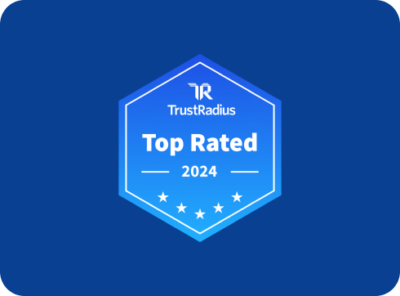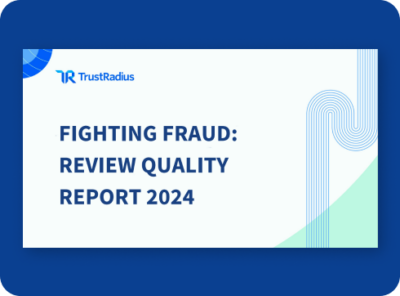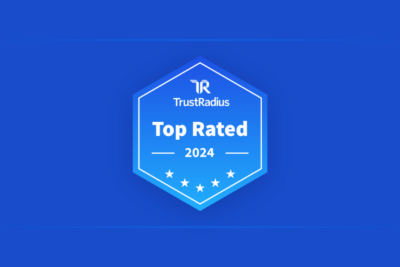
How the Trust Gap Impacts B2B Selling Techniques
Today, software buyers have a wide range of resources at their disposal. And the average buyer now uses an average of 5.2 different sources of information along the way.
B2B customers utilize forums to discuss software options, see user reviewers as critical to their decision, and expect free trials or at least a full demo. They use all of this on top of vendor-provided resources like blogs, marketing collateral, and customer references.
The question is: with all of these resources at the buyer’s fingertips, will traditional B2B selling techniques still work? The short answer is: no, not really.
In our 2019 B2B Buying Disconnect report, we found a major disconnect between B2B buyers and sellers. Vendors who aim to be forthcoming about product limitations vastly outweighed buyers who found that vendors actually are forthcoming about product limitations. It’s what we call the trust gap.
And without a shift in selling techniques, the trust gap will only widen.
B2B sales teams need to update their selling approach to meet buyers where they are, closing the trust gap in the process.
We’ll take you through how — but first, how does the B2B trust gap affect sales teams?
The B2B Trust Gap — and What it Means for B2B Sales Techniques
When asked which resources are trustworthy in their buying decision, B2B users consistently rank vendor-provided resources at the bottom of the list. Case studies, blog posts, webinars, landing pages — they all score low.
This lays the foundation for a gap in trust between the vendor and the buyer. The vendor thinks they are providing great resources for their target audience, but the target audience isn’t buying it.
The trust gap boils down to this: vendors aim to be forthcoming about product limitations at a much higher percentage than buyers who find vendors to actually be forthcoming about their product limitations.
84 percent of vendors said they aim to be clear about where their product works well and where something else might be a better fit, but only 36 percent of buyers felt the vendor they bought from was very forthcoming about where they product works and where it may not be a good fit.
That means vendors vastly overestimate their own transparency.
“Sales reps and vendor reps are inherently motivated by getting the sale & will say just about anything to get the sale. When you can do the research for yourself, you can trust your interpretation of the product.”
– B2B Buyer
Buyers want experience, referrals, demos and reviews see both a product’s promise and limitations. Without those resources, users feel they aren’t being given the full picture.
The gap between intention and reality widens as sales teams continue to pour into resources that just don’t connect with buyers.
The trust gap makes it clear that B2B sales teams should reexamine their selling techniques.
Read More: Dear B2B Tech Marketers, Your Marketing Tactics Suck — Here’s Why
In a B2B environment where the lines between sales and marketing are increasingly blurred, the buyer’s journey has shifted. But you can still meet them where they are at, giving them the resources they need to continue down the funnel.
5 Ways to Close the Trust Gap With B2B Selling Techniques
Our survey highlighted a range of tactics that B2B sales and marketing teams can put into practice to improve conversion.
None of them are about using more effective sales language; all of them push vendors toward a more transparent, customer-centric sales strategy. These are the new-and-improved B2B sales techniques.
Shorten the timeline with more transparency and better buyer tools
Buyers don’t want a complicated, drawn-out sale. They want a straightforward picture of how a B2B tool can work for their enterprise. They don’t want sales language. They want transparency.
When asked how vendors can make the buying process easier and faster, buyers highlighted transparency about a product’s capabilities and limitations. Nearly 45 percent of survey respondents said a vendor could be more transparent.
Close behind this increased transparency was the desire for tools to show buyers the ROI of the purchase. This could be anything from hard numbers based on a case study to a software-specific ROI calculator that translates the value of the tool.
Customers don’t just need to know how your B2B tool works; they need to know how it will work for them. Working customized capabilities and acknowledging limitations in your sales call will answer their questions before they even ask them. At the same time, offering buyers a concrete way to explore the ROI of the purchase will show them you mean business.
Show evidence with customer proof
Transparency and hard numbers were by far the most popular options for making the purchase process easier and faster for buyers. But buyers also want an increase in customer proof behind the B2B software. Nearly a third of survey respondents said that a vendor could share customer evidence to move the process along — including reviews, case studies, and specific use cases.
Software buyers need to know what to expect on a practical level before actually making a purchase. While the transparency and ROI discussed above set the stage for these expectations, customer-provided resources can help buyers imagine what the software could look like in their own use case.
Three quarters of vendors say they already put a real-world spin on their sales pitch by sharing customer evidence. It’s an affirmation that customer proof is a good way to boost confidence early in the sales cycle.
But if 75 percent of vendors are already sharing customer evidence, what’s giving buyers pause?
The difference is in perception. Just like the trust gap, there are more vendors who believe they are providing adequate customer resources than buyers who think they are receiving them.
If you are only providing customer reviews or use cases when asked, for example, this may not be enough in the buyer’s mind. Instead, consider putting customer proof — those case studies and reviews — front and center every step of the way.
Turn your customers into advocates
Using customer-centric resources already makes the sales process more natural and more appealing to the buyer. If you can find ways to utilize your customer’s voice directly, the process becomes even more natural.
Here’s the good news for you: nearly three out of four customers are willling to advocate for the product to others.
Advocacy, in this case, includes both serving as a reference and writing a review. These customers actually want to share their successes with your tool, as well as tips and guidance for those who may not have come on board yet.
While a huge percentage of your customers are likely willing to become advocates, they are not likely to take this step on their own. As you reshape your sales strategy in the face of the trust gap, look at ways you can actively encourage current customers to become advocates.
It’s a win-win: detailed reviews give current customers the chance to reflect on what’s working well with the partnership, and they give you a means to show your prospective buyers where your value lies.
Redefine your understanding of ‘positive’ reviews
What rating do you need to see to consider a review positive?
Many would say a 9 or 10 — even an 8 can sometimes be seen as a ‘mixed’ review. But NPS standards place detractors as reviewers with a product satisfaction rating of 6/10 or lower.
Anyone that has ranked your product at a 7 or above can be considered a net positive to your product and brand!
Out of the buyers we surveyed, less than 10 percent were detractors. At the same time, 93 percent of buyers intended to renew their current B2B products.
By limiting their view of ‘net promoters’ to customers who leave a 9 or 10, sales teams are leaving a huge potential buyer advocates on the proverbial table. And truthfully, software buyers aren’t looking for a 100% rosy picture of your software when reading reviews. 71% of buyers say it’s very important to understand the cons before buying, and reviews are a go-to resource for understanding cons. Reviews with honest, factual details can help potential buyers understand your software and accelerate deal cycles.
For buyers who have left your product a satisfaction rating of 7 or 8, you also have an opportunity to reach out. See where you can improve their satisfaction, and ask what they love about your product. It’s a good foundation for transparent promotion.
Become customer-centric and customer-powered
Most B2B teams would say that they are focused on their customers — but few actually reflect that in their sales strategies.
Instead of separating sales and customer service, make customer satisfaction a core part of your sales strategy. To be customer-centric is to close the feedback loop for the most impact on both sales and product.
In a particularly insightful portion of our survey, vendors ranked both the effectiveness of their sales reps based and examined their own overall attitude towards customer proof. 45 percent of vendors who took their customers’ voice to heart said that their reps were very effective.
In contrast, those who saw no customer evidence in their interactions with potential buyers were lukewarm in their response. Only about 15 percent said their vendor reps were effective.
The takeaway is clear: closing the trust gap is about more than simply throwing up a handful of customer reviews on your landing page. It’s about actively engaging with your current customers to better connect with your potential buyers. It’s about speaking their language.




